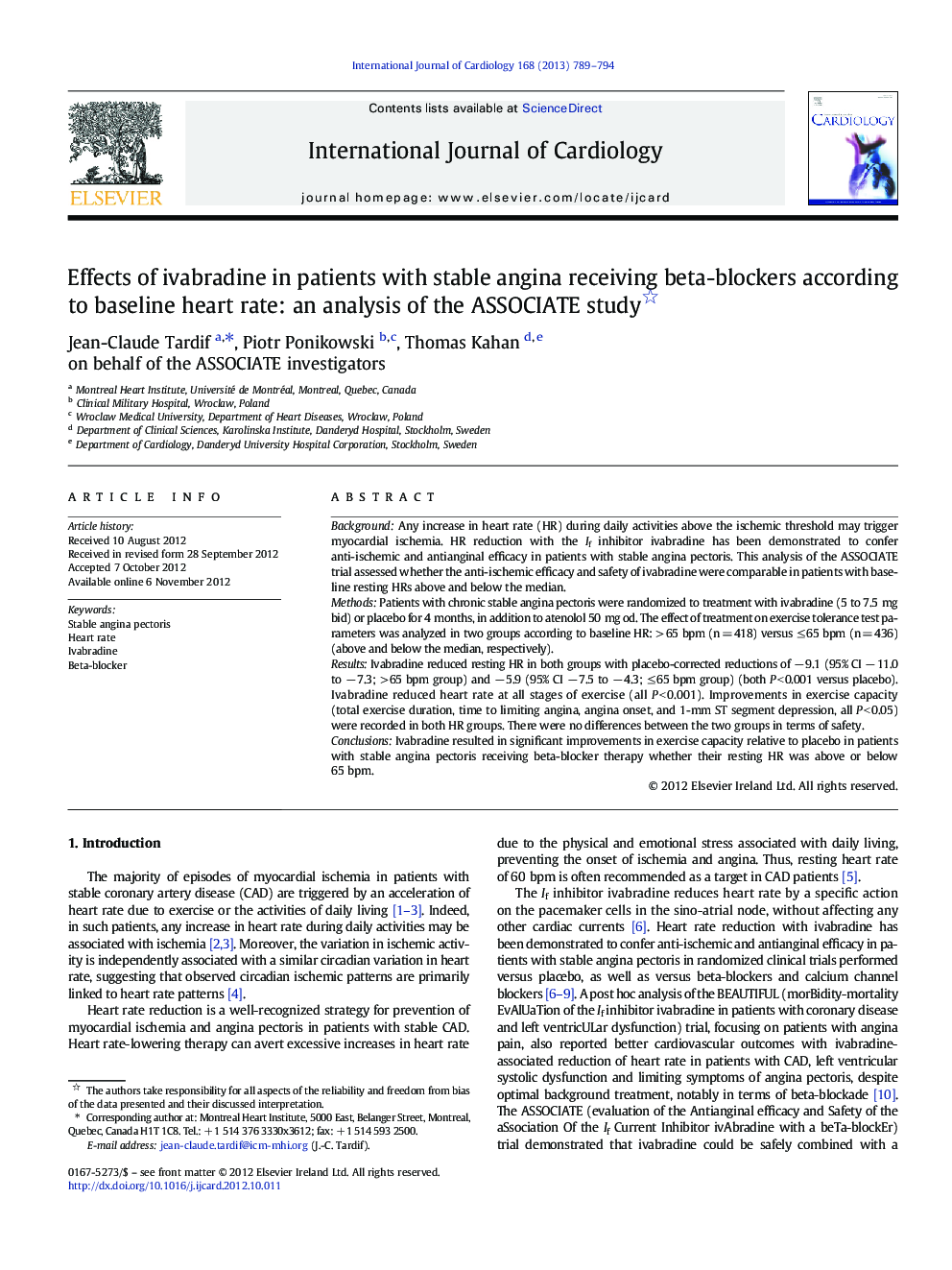| Article ID | Journal | Published Year | Pages | File Type |
|---|---|---|---|---|
| 5974053 | International Journal of Cardiology | 2013 | 6 Pages |
BackgroundAny increase in heart rate (HR) during daily activities above the ischemic threshold may trigger myocardial ischemia. HR reduction with the If inhibitor ivabradine has been demonstrated to confer anti-ischemic and antianginal efficacy in patients with stable angina pectoris. This analysis of the ASSOCIATE trial assessed whether the anti-ischemic efficacy and safety of ivabradine were comparable in patients with baseline resting HRs above and below the median.MethodsPatients with chronic stable angina pectoris were randomized to treatment with ivabradine (5 to 7.5 mg bid) or placebo for 4 months, in addition to atenolol 50 mg od. The effect of treatment on exercise tolerance test parameters was analyzed in two groups according to baseline HR: > 65 bpm (n = 418) versus â¤Â 65 bpm (n = 436) (above and below the median, respectively).ResultsIvabradine reduced resting HR in both groups with placebo-corrected reductions of â 9.1 (95% CI â 11.0 to â 7.3; > 65 bpm group) and â 5.9 (95% CI â 7.5 to â 4.3; â¤Â 65 bpm group) (both P < 0.001 versus placebo). Ivabradine reduced heart rate at all stages of exercise (all P < 0.001). Improvements in exercise capacity (total exercise duration, time to limiting angina, angina onset, and 1-mm ST segment depression, all P < 0.05) were recorded in both HR groups. There were no differences between the two groups in terms of safety.ConclusionsIvabradine resulted in significant improvements in exercise capacity relative to placebo in patients with stable angina pectoris receiving beta-blocker therapy whether their resting HR was above or below 65 bpm.
